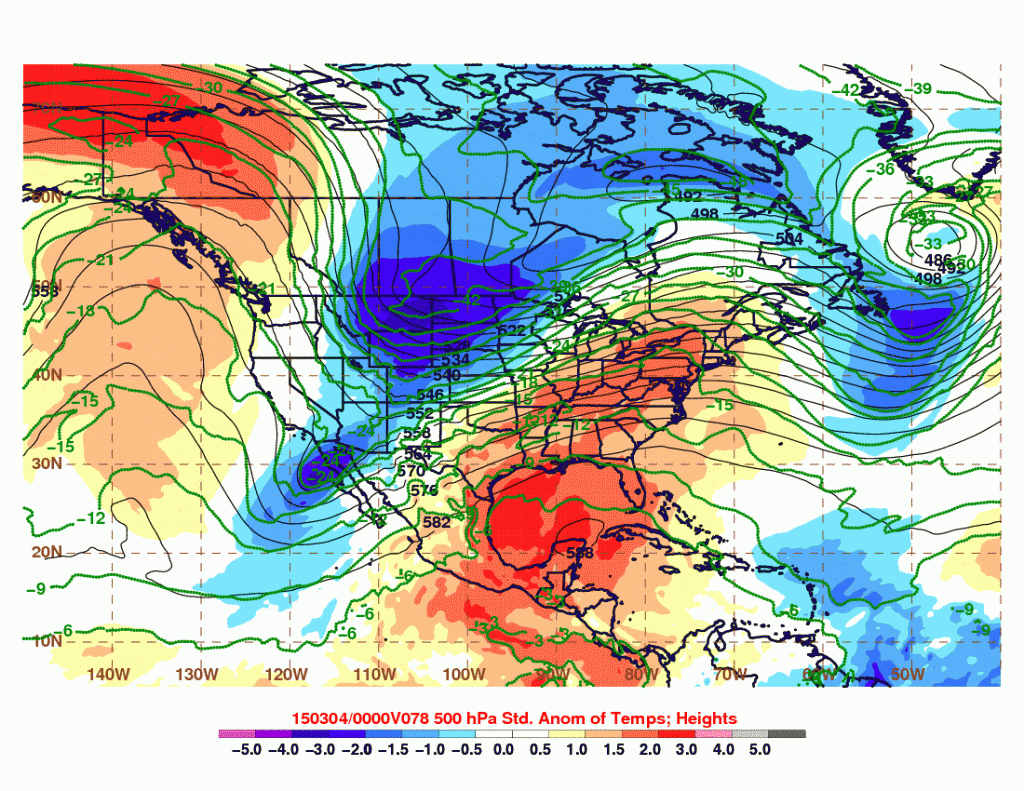After a long and cold go of it in many parts of the eastern US in the past weeks, the prospect for warmer weather, even if ephemeral, is almost certain lighten many moods. So too might it provide a kickstart to early spring migrants that can and often do respond to the rapid onset of such conditions. The image below is what brought this possibility to the attention of the BirdCast team.

This image shows anomalies in 500 hPa geopotential heights. Briefly, lower values in blue indicate anomalously colder air (troughs) whereas higher value in orange (ridges) indicates anomalously warmer air (warm air expands producing higher heights).
Some may recall a similar event in March 2012, albeit on a larger spatial and temporal scale. This event brought many record early arrivals of species like Tree Swallow and Eastern Phoebe to parts of the Northeast. It is likely the early migrants will again take advantage of these favorable conditions to migrate on Monday-Wednesday, 2-4 March in the US east of the Mississippi River. Check out this map for more detailed maps and animations of these images.
As always, please report your sightings to eBird, so we can keep track of what happens on the ground out there!




